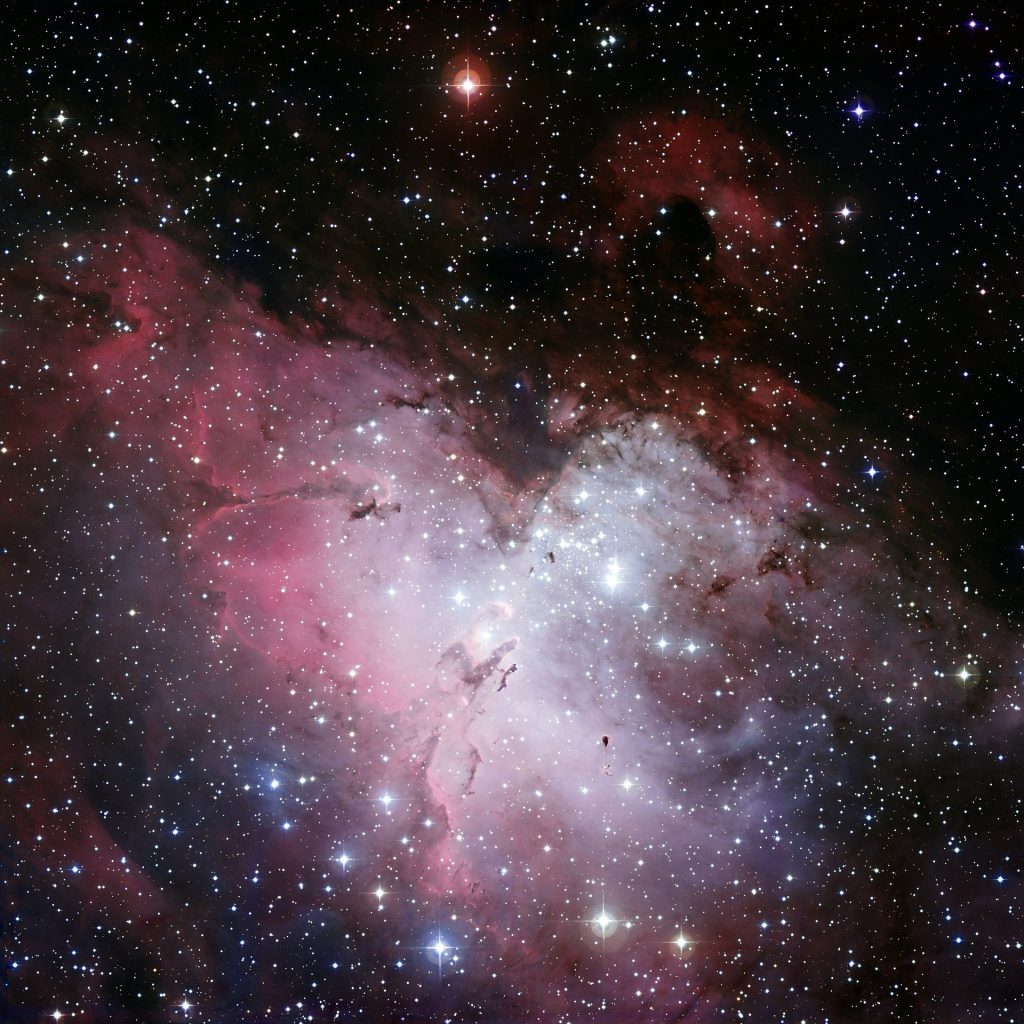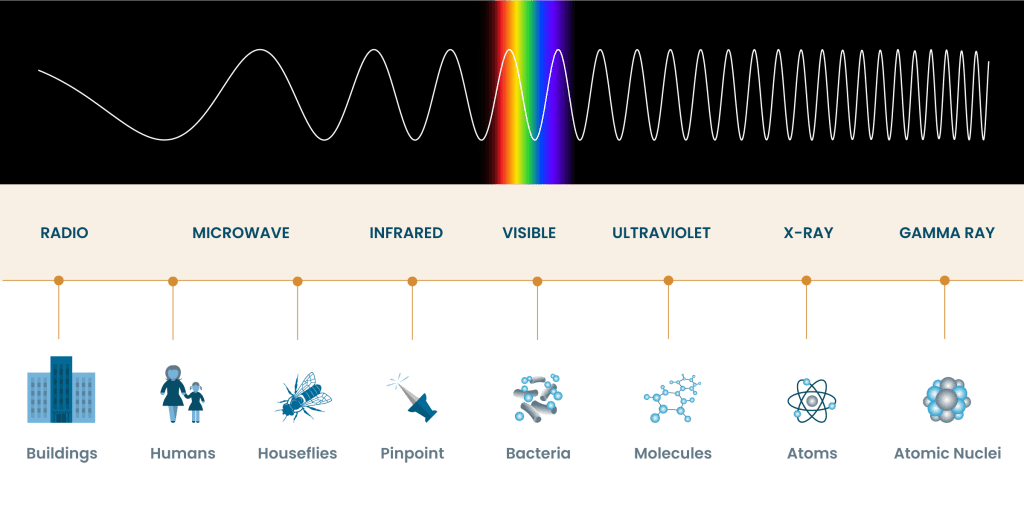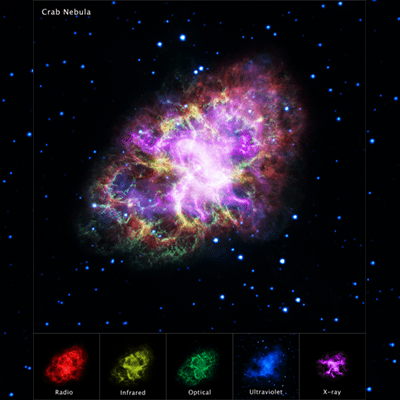
Seeing The Visible and The Invisible
Hi, I’m Marley, the Astronomer here at the Space Centre.
How are we able to get photos of worlds beyond our own? Stunning pictures of Jupiter, the Sun, and even a photograph of a black hole? There are different methods depending on what you want to see, but it always comes back to understanding two things: photons and electrons.
In an atom, we can think of electrons, negatively charged particles, orbiting the nucleus like satellites orbit Earth. Like satellites, electrons have specific orbits that they stay at. They don’t move unless they get hit with energy. This makes the electron excited, and it moves up into a different orbit. It can move up several orbits at once, like jumping from a communications satellite to the International Space Station, to the Hubble Space Telescope. Eventually, if it cannot escape the atom (an ionization process), the electron will fall back to its original orbit. Falling back down releases energy as a photon. This photon will have a specific amount of energy. Think of it like a packet: if only one packet of energy made the electron go up, then only one packet will come out when the electron goes down.
Having a specific amount of energy will mean the photon will also have a specific wavelength. This wavelength is what we see as colours: the colours of the rainbow, red, orange, yellow, green, blue, indigo, and violet. All these colours are photons that have been emitted. But there are many photons we can’t see. This is because light exists in far more wavelengths than our eyes can detect. Our eyes have evolved to be able to see what astronomers call visible or optical light. Microwaves, radio waves, even the heat we feel from the Sun – these are all types of light that astronomers call electromagnetic radiation. Together, they make up the electromagnetic (EM) spectrum.
Wavelength Comparison
Credits: NASA and STScI

Astronomers make observations across the entire EM spectrum. Many observatories are built to look at one specific part of the EM spectrum. This is because there is something to explore at every point in the spectrum. In fact, astronomical objects do not emit in only one part of the spectrum. One single nebula, like the crab nebula, can emit across different wavelengths. Even planets like Saturn emit light in different wavelengths. Looking at different wavelengths allow astronomers to get a more complete understanding of what is happening in the object they are looking at.
Crab Nebula in Multiple Wavelengths:
Credits: NASA, ESA, G.Dubnet et al.; A. Loll et al.; T. temim et al.’ F. Seward et al.’ VLA/NRAO/AUI/NSF; Chandra/CXC; Spitzer/JPL-Caltech; XMM-Newton/ESA; and Hubble/STScI

Part of the Spectrum
Radio and Micro Waves
Infrared
Optical
Ultraviolet
X-ray
Gamma-ray
What can we see?
Cold gas, cosmic microwave background
Warm gas and dust, molecules in a planet’s atmosphere
Objects as our eyes would see them
Stellar nurseries, the hottest and most energetic stars
Material spiralling around a black hole
Exploding stars, colliding neutron stars
Telescope & Observatory
ALMA
James Webb Space Telescope
Hubble Space Telescope
SWIFT
Chandra X-Ray Observatory
Fermi Gamma-ray Space Telescope
Moving away from the electromagnetic spectrum, there are more tools that astronomers use to see invisible things. An example would be gravitational waves. These waves are the results of very large objects like black hole and neutron star merging. We cannot see these events with our traditional methods, so using gravitational waves allows astronomers to gain observational data without needing light! When two massive objects merge, the fabric of spacetime ripples from the energy—like dropping a pebble into a pond. This stretching and squeezing of spacetime can be detected with special instruments like interferometers at LIGO. You can read more about gravitational waves and the LIGO experiment here.
The universe is vast, and there is so much to see inside of it! Astronomers cannot limit themselves to studying only what we can see with our eyes. We would miss out on far too much! Here are some activities that you can try to learn more about the different types of light.
Astronomers Playlist
Time
Activity
30 mins
Discover how light shines through different kinds of juice with this short video. Can you replicate the experiment?
Ask yourself: How does the colour of the juice affect the light?
15 mins
Now that summer is over here is a fun activity to use up any leftover sunscreen and see the power of ultraviolet light. Make your handprint with sunscreen and paper. Try the activity with two different strengths of sunscreen. Is there any difference in the time it takes for your handprint to form?
Ask yourself: Telescopes that can ‘see’ in ultraviolet light are usually in space not on Earth. Based on sunscreen’s ability to block ultraviolet light, why do you think this is so?
15 mins
Look at this interactive webpage about how the Hubble Space Telescope sees different objects in different wavelengths of light.
Ask yourself: What types of features become more prominent in the different wavelengths of light?
60 mins
Build your own spectroscope to help you analyze the visible light from different objects. Then look at the Aerokats project, a NASA-based education project that uses kites to study the atmosphere.
Ask yourself: what differences do you notice in the spectrum of different objects?


